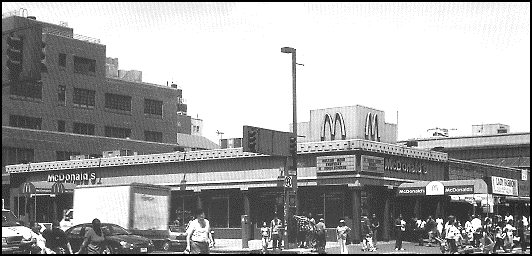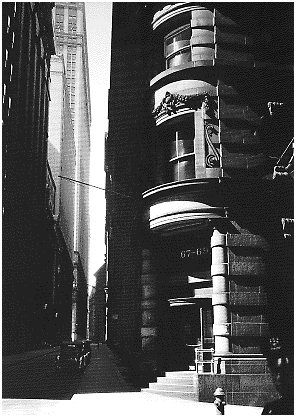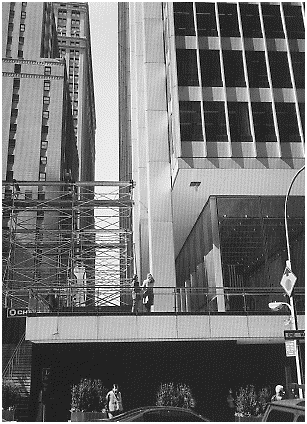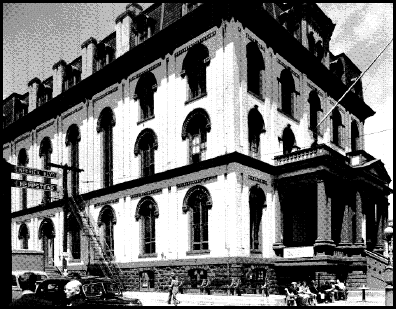In this new supplementary edition, Levere has sought out the exact positions --- along with the month of the original and even the time of day --- of eighty or so of Abbott's black-and-white photographs. He then duplicates, as best he is able, the original street scene --- showing changes that had come about in the intervening years to that street or neighborhood.For instance, take the picture of the gorgeous Jamaica Town Hall at Parsons Boulevard at Jamaica Avenue, Queens, 1937. Below, you will see the present occupant of the same site.
McDonald's Replacement for Jamaica Town Hall |
Or consider the Brooklyn Bridge as once seen from South Street. The 1937 photo shows the humble façade of a Pennsylvania Railroad pier shed. In 1998, the bridge is almost completely hidden by the supports of the highway known as FDR Drive. Note that they not only got rid of the PRR shed, they managed to get rid of the lovely Roman bathhouse we knew of as Penn Station (and the railroad itself).
Cedar and William Street --- 1936 |
Still, it's not all gloom-and-doom and Donald Trump. The great Jefferson Market Court in Greenwich Village ("Ruskian Gothic" according to the author) had grown dingy by the time of Abbott's 1935 photograph. Today, it is sprightly, spruced up by the city and now part of the New York Public Library System)Funny, in the original volume there were shots that included bits and pieces of the old elevated railways that ran up Third Avenue and Sixth Avenue. It was considered to be benign progress when they were torn down, but there was a power and form-fit-function to these highly efficient people movers of old, now gone missing from the city life.
Cedar and William Street --- 2002 |
In my youth I remember climbing massive staircases to board and ride the trains, standing at the window of the first coach, having apartments and store pass by me, looking into people's bedrooms, people motionless in the windows on those hot August days, heat shimmering the whole scene, people looking at me looking at them looking at me as we passed each other in the great noisy clatter that told us we were together in one of the noisiest, liveliest places in the world, riding there on the top of the world.


